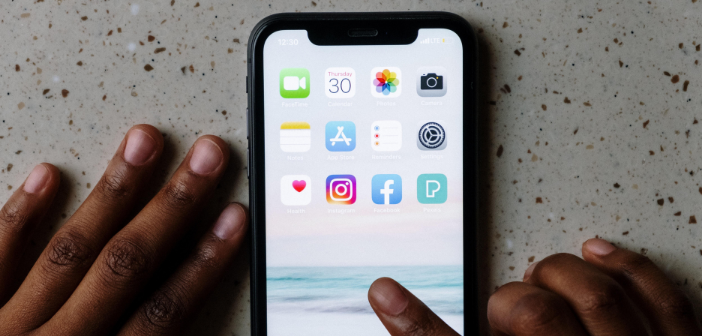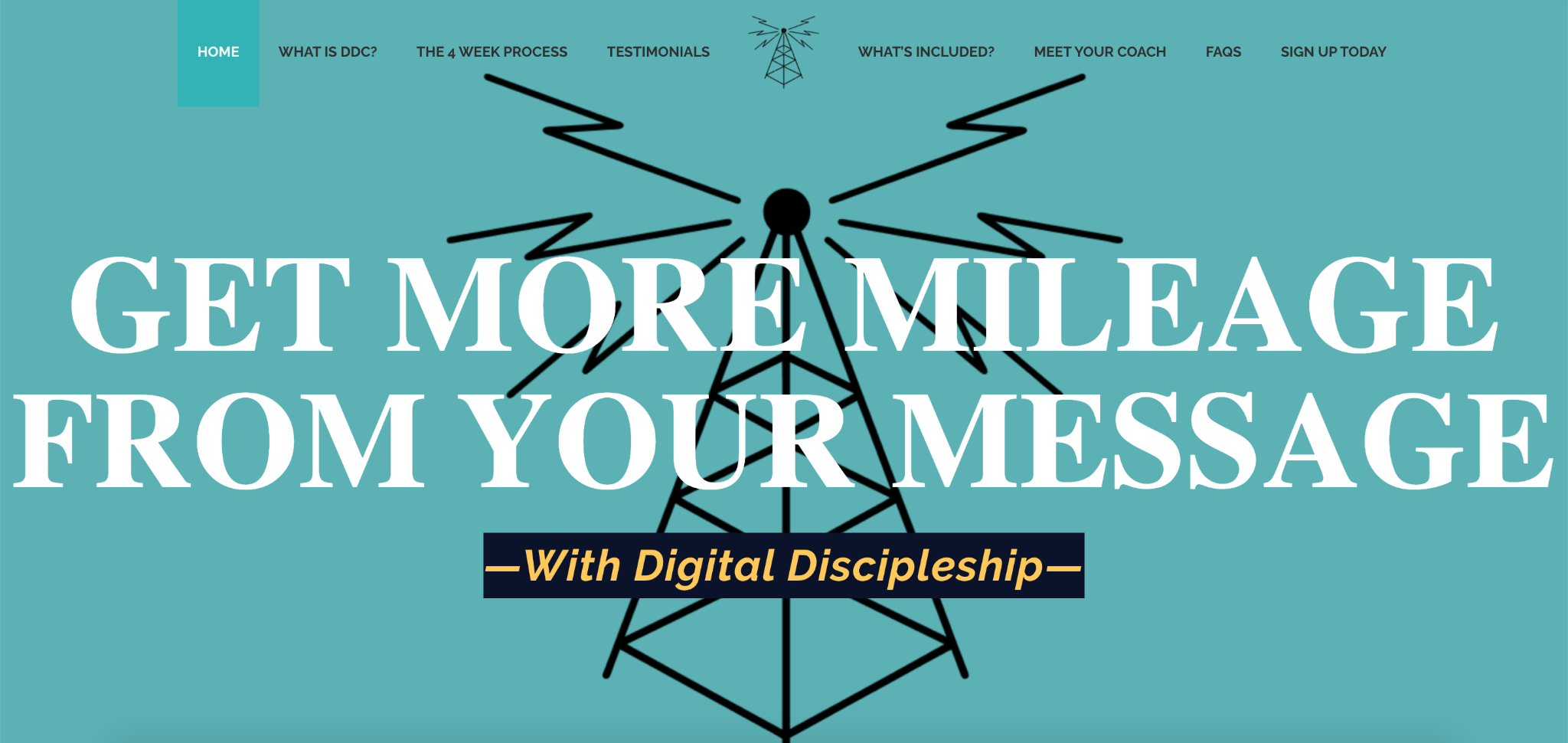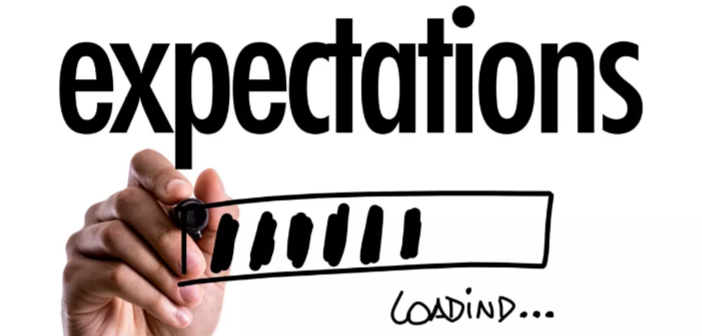By Jesse Barnett
It’s time to go ahead and state the obvious—the world in 2022 is a drastically different place from what it was in 2019. The effects of the last two years have seemed to change everything—from the way we shop, to the kind of vacations we can take, to how we work remotely—and even the way we do church.
As a small or mid-size church pastor, this may be a source of frustration for you.
In his article, Seven Years in Seven Weeks, 95Network’s Executive Director, Dale Sellers, wrote this:
I’ve said for some time that the pandemic was an “accelerator” for every church. If you were already moving in the direction of healthy growth, you could better handle the challenges you faced. However, if you were in a state of unhealthy activity, then navigating all of the decisions required by the pandemic likely brought confusion, stress, and even hopelessness. Many of our leaders are at a loss about what to do next.
Maybe you’re one of the leaders Dale is writing about. You want to honor your calling to preach the word and build a church that spreads the Gospel, impacts the community, grows in size and influence, and equips and multiplies disciples, but you’re also feeling a bit stuck and overwhelmed. If people aren’t walking through your church’s doors, how can you reach them?
Here’s why this actually may be a blessing in disguise.
People are ready to hear the Good News! They’re just as lost, lonely, and looking for answers as they ever were (maybe even more). And thanks to the communication shift that’s happened, it’s easier than ever to reach them—if you have a plan. It just requires a bit of a shift in thinking and a willingness to try something new.
Did you know…
- … 72.3% of the US population (about 240 million people) actively use social media; their average time per day is 2.5 hours
- … As of January 2021, there were an average of 4.7 billion internet users worldwide, with an average of 6.75 hours per day spent online
- … Of those 4.7 billion, 2.7 billion are active social media users
- … 71% of consumers who have had a good social media service experience with a brand (and like it or not, your church is a brand) are likely to recommend it to others.
- … ⅓ of US adults have watched religious services online or on television
Clearly, the world is online and using social media to engage with things they care about. This is a huge opportunity for you!
But here’s what makes it tricky—communicating online, something I call digital discipleship, whether on your website, by video, through an article, or on social media—has a different set of rules than communicating from the stage. It’s a one-way kind of communication so you don’t get that immediate feedback that allows you to make adjustments.
- Do it wrong, and you risk losing your audience.
- Don’t do it at all, and you miss out on your audience altogether.
As a communicator, if you aren’t tapping into the potential of this domain, you’re missing out on the prime way to reach your community, share your message, and draw people into your sphere of influence.
The Challenge with One-Way Communication
At 95Network, we want to help you bolster your online engagement, so we’ve created a solution to help you effectively and efficiently get more mileage from your message using digital discipleship. But before we get there, let’s unpack some of the challenges and problems you might be facing.
The main challenge is that most churches don’t know how to communicate with people online. I get it. Technology seems to change at an exponential pace. The hot new app today may be obsolete tomorrow. (Case in point—if you’re excited about your church’s presence on Facebook, you’re about fifteen years too late.) The learning curve can seem too steep, especially for something that’s only going to last as long as a piece of gum.
But here’s the issue: If you aren’t willing to meet people where they are… outside the doors of your church, why would you ever expect them to meet you where you are… inside your church?
When you don’t have a good strategy for digital discipleship, you run into several problems:
- You aren’t reaching your community. Not to be redundant, but in this day and age, the people you hope to reach probably aren’t beating down your door. There’s too much competition for their attention. So if you aren’t able to cut through the noise, the unchurched stay unchurched and the dechurched stay disconnected.
- Your community doesn’t know you exist. Think about the number of churches within a five- or ten-mile radius of where you are right now. Those are the churches the people in your community drive by every day. Each one is competing for their attention. You’re just one of the crowd when it comes to enticing people to walk through your doors. And that’s just the “church people” who are looking for a place to worship. Add a pandemic to the mix, and it’s even tougher to draw people in.
- Your community can’t learn anything about you. Think about how you engage with a new restaurant, doctor, or mechanic. Chances are you go online (there’s that word again), look them up, read reviews, find the information you need (menu, services, pricing, etc.), and then make the decision to walk in the door. That’s the way we engage with organizations now. And the people you’re trying to reach look at you the same way. If they can’t find you online, they aren’t interested.
The good news is that the very people you’re eager to reach are hungry for your message. There’s a world out there that is dying to hear the Gospel of Jesus. And He said it best in John 4:35, “…But I say, wake up and look around. The fields are already ripe for harvest.”
These words Jesus spoke two thousand years ago still apply today. The message is still relevant; you just need to create a process to connect it to your intended audience easily.
Introducing Digital Discipleship
In one of our Small Church Strategies, we unpack a concept called Becoming a Hybrid Church. Simply put, a hybrid church is a blend of in-person and online connection. It’s analog and digital. Done well, it offers you the best of both worlds—a way to share your message and spread the gospel with an engaged congregation that finds you compelling and worth following.
While many bigger churches are using this model effectively, smaller churches are also finding great success in building a hybrid church—especially in light of the pandemic.
So what is digital discipleship? It’s a blend of old and new:
- Digital means leveraging today’s tools—the internet, social media, video, short-form content—that connect us online and help us engage with each other.
- Discipleship is obeying Jesus’s command to go and make disciples.
Now, to be sure, this is going to be a stretch in your thinking and your capacity—especially if you’ve been doing things the same way for a while. But if you embrace the possibilities of digital ministry, you’ll discover that online discipleship is a powerful tool that multiplies your ministry’s success and encourages people to build a relationship with your church family.
Imagine if there was a way to create awareness and engagement, draw your community to and through your digital doorway to provide hope and answers to their problems, multiply your message through digital discipleship, and, in the process, revitalize your church…
The good news is, you don’t have to imagine a strategy like this because we’ve already created it for you. It’s called Digital Discipleship Coaching. All you have to do is be willing to expand your thinking and trust the process.
3 Benefits of Creating a Digital Discipleship Strategy for Your Church
If you think of your digital presence as a doorway to your church, then it must be welcoming, open, and accessible. When you unlock your digital doorway, it’s like creating “curb appeal” for your home.
People can drive by slowly, check out the lovely flowers in the flowerbeds, the welcoming rocking chairs and wreath on the front porch, and the neat and tidy lawn. All of these subliminal clues combine so people say, “Hey! That’s a place I’d like to check out.”
When you get get your digital house in order, you’ll discover three main benefits:
-
INCREASED AWARENESS—PEOPLE DON’T KNOW UNTIL YOU TELL THEM
When you’re a small church, you often have an awareness problem that shows up in two distinct ways—your awareness of your community and their awareness of you.
A well-intentioned digital discipleship strategy is a doorway to your community. An open door allows you to exchange information with people about where they are, what they are dealing with, what needs you can minister to, and how you can help them.
You seriously limit your impact if you’re relying on your sign out front or an outdated website to communicate these critical things. Everyone wants to know, “What’s in it for me?” And when you answer their questions through digital discipleship, you open the door to a conversation in a way that is both intriguing and welcoming.
With a welcoming digital discipleship strategy, you can show them what you stand for, how you can help them, why God placed you where you are in the community, and how they can engage with you. That leads to the next benefit.
-
IMPROVED ENGAGEMENT—PEOPLE WON’T ENGAGE UNLESS YOU INVITE THEM.
When you think about the kind of people you hope become part of your church—whether in your building or as part of your digital discipleship community—engaged people should be at the top of the list. People who are engaged are a joy to teach because they hunger for the Word. They’re a joy to serve with because they have a heart for the community. They’re a joy to minister to because they want to grow nearer to Jesus and make an impact in the world.
But the word engagement sometimes gets a bad rap. There’s a misconception that to create engaging social media content you need a perfect video backdrop, a professional video editor, expensive lights, mics, and equipment, top-notch graphic design, and a flashy, get-noticed-online kind of style.
That may be you, but I doubt it. And that’s a good thing.
Flashiness may work to draw people in, but it’s rarely life-changing.
The people in your community value authenticity first. Read that sentence again. This is especially true of the next generation. They’re inundated with social media influencers who look good and talk a big game but provide little substance. They hunger for life-changing authenticity.
When you create a strong digital discipleship strategy, you’re meeting people where they engage with the world. You have the chance to bring them a timeless message in an authentic way that provides the heart and hope the world desperately needs. When you combine this with compelling content that they want to engage with… you’ve tapped into something powerful.
But the only way to get this kind of engagement is to devote time each week to working on your digital presence. It doesn’t have to be complicated, but it must be consistent.
If you don’t know how to engage with your community, they won’t know how to engage with you. A digital discipleship strategy is the first step towards creating a vibrant, engaging hybrid church culture that draws people in.
-
MULTIPLIED MESSAGE—MAXIMIZE THE REACH OF YOUR MESSAGE.
One of the main pushbacks to creating a digital discipleship strategy and the hybrid church model is that it’s just one more thing to add to my already crowded to-do list.
But what if I told you that you can pair this strategy with what you’re doing now and use it to multiply the power and reach of your ministry?
Sound too good to be true? It’s not.
As a content creator—which just means I write books, emails, articles, digital courses, website copy, social media content, etc.—I’ve learned a powerful secret. You can repurpose your content across a large number of channels without having to create something unique every time. This helps you multiply your reach with minimal effort.
For a long time, this felt like cheating. I felt like I was supposed to come up with a new way to say new things over and over again. If you’ve ever tried this, it’s exhausting.
There’s a reason that you (and every other pastor) can preach a message about the Sermon on the Mount and each one can put his own spin on it and have it be powerful and compelling. The message is good no matter how it’s received.
And if you repurpose your content, you reach people who may have missed it before.
Here’s a practical example of how digital discipleship strategy might look:
- Write a sermon for next week’s Sunday service.
- Deliver that sermon in person to your 9:00 AM and 11:00 AM crowd.
- Record the audio and video versions of the message (this could become a podcast or video teaching on YouTube.)
- Transcribe it using a low-cost tool like Otter.ai.
- Review the transcript and look for 5-10 punchy statements that you can share on social media.
- Clip the most powerful 1- to 3-minute audio and share it online.
- Copy and paste some of your message into a short article for your website (you can link this to the video or audio of your sermon from #3 above).
- Throughout the week, use your smartphone to record a video of you (or a staff member) sharing a sixty-second summation of a key point. (This can point back to the last week’s message or forward to the coming week’s message.) Schedule this video to go out on your social media feeds in advance, or use an app like Text in Church to send it out to your engaged community.
- Get creative with your own ideas.
- Rinse and repeat.
See what I mean? You can repurpose one message (that you’re already doing anyway) into content that’s used in multiple places.
This is what I teach pastors each month through my four-week Digital Discipleship Coaching program. And it works.
Digital discipleship meets people where they are—online—and is accessible in audio, video, and written forms. It’s shareable and builds momentum. It’s engaging. It answers their questions using your message. It’s simple once you learn the process.
Best of all, you don’t have to do all the work.
I’m betting that you have people on your team or in your congregation that will help with this. You may have young social media savvy people who would love to help with posts. You may ask your most loyal attenders to share their notes and takeaways with you each week. They can even share these to their own accounts and tag or link them to your social media.
The possibilities are endless because technology keeps changing (trust me, I’m learning new things each day, too). All you need to do is have a pioneering spirit and be open to multiplying your reach in new ways.
Digital Discipleship Is Easier Than You Think
Hopefully, this is encouraging to you and gives you a glimpse at what could be in your church. My intent is not to stress you out and give you more to do. My goal is to empower you to embrace the possibilities of digital discipleship and the hybrid church model to connect with the people of your community in ways you haven’t considered.
As a communicator, you have to constantly rework and revise your message and delivery based on who’s in the audience, how they listen and learn, and what they need.
Digital discipleship is the next iteration of this process, and since it’s constantly evolving, there’s no “wrong” way to do it. This should give you the freedom to experiment and try new things. The Gospel message doesn’t change, but if you want to reach the next generation, stay relevant, and connect with people who need you and your church, you must adapt and learn how to navigate this digital space.
Fortunately, You Don’t Have To Figure Out Digital Discipleship Alone.
As a Communications Coach with 95Network, I work with churches just like yours to:
- Discover what a good online presence looks like for your church and community.
- Make the shift to digital discipleship and a hybrid church model as simple as possible.
- Coach you through the online communication process.
- Create a system to push compelling content across a variety of avenues.
- Provide a filter/fresh set of eyes until you get on your feet in the digital space.
- Unlock and expand the potential of the resources already at your disposal.
- Multiply the power and reach of your message.
Pastor, my hope is that once you begin to engage in digital discipleship, it becomes something that is life-giving and is a part of your ministry that you look forward to each week.
Stay the course. Do your best. Bring truth and light to the world. The world is ready for digital discipleship. Let us help you create a digital discipleship strategy for your church. It might just change your community.
Get to know Jesse Barnett better by visiting our “Who We Are“ page.
Be sure to stop by our 95Network.org/online store to find helpful resources designed to encourage and strengthen your ministry leadership.







